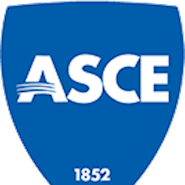
Joel P. Conte, Ph.D., P.E., F.EMI, F.ASCE, whose key achievements and contributions to the profession stem from his research in structural modeling and analysis as well as other areas, has been named a fellow by the ASCE Board of Direction.
Conte also researches earthquake engineering, stochastic dynamics, structural reliability, performance-based design and assessment, structural health monitoring, and shake table dynamics and control. His research has advanced nonlinear modeling of bridge structures, including the effects of soil-structure interaction, and probabilistic seismic performance assessment of bridges such as those planned for the California High-Speed Rail. This work addresses uncertainties related to earthquake ground motion intensity, record-to-record variability, finite element (FE) model parameters, and the estimated probabilistic model parameters. It has led to the development of computational frameworks and validated simplified methods for risk-targeted, performance-based seismic design.
His research has advanced the application of computational Bayesian inference methods for the calibration, updating, and validation of nonlinear finite element models of structural systems – including buildings, bridges, dams, and miter gates. These physics-based models, regularly updated over the life of the structure using measurement data, serve as digital twins that can be interrogated for damage diagnosis and prognosis. This digital-twin based framework, which accounts for relevant sources of uncertainties, provides powerful next-generation tools for optimal infrastructure asset management.
Conte has pushed the boundaries on multiphysics-based modeling of shake table systems, such as the six-degree-of-freedom (6-DOF) NHERI Large High-Performance Outdoor Shake Table System (LHPOST6) at the University of California, San Diego. A calibrated and validated digital (numerical) twin of a shake table system serves several critical functions: (1) pretest simulations (“dry-runs”) to support the planning and optimization of test specimens and experiments; (2) offline tuning of the shake table controller in a virtual environment that includes the specimen’s dynamics; (3) analysis of table-specimen-control interaction – through coupling the shake table model, the shake table controller, and a numerical model of the specimen – to aid in interpreting test results; (4) safe, offline training of shake table operators; and (5) a development platform for next-generation shake table controllers, such as adaptive nonlinear controllers, and algorithms for real-time hybrid shake table testing.
More recently, he has started to incorporate machine learning and surrogate modeling into his work to accelerate (enable) Bayesian inference and probabilistic seismic risk assessment using high-fidelity, physics-based structural models. Throughout his career, Conte’s research has had both national and international impact, supported by state, national, and international agencies.
On the educational side, over the course of his career, he has dedicated significant time to developing, continuously updating, and delivering course materials for undergraduate courses (Structural Analysis; Statistics, Probability, and Reliability) and graduate courses (Nonlinear Structural Analysis, Structural Reliability, and Risk Analysis; and Random Vibrations) at Rice University, UCLA, and UCSD. His teaching has always been driven by the goal of fostering students’ knowledge and competence in the subject matter.



